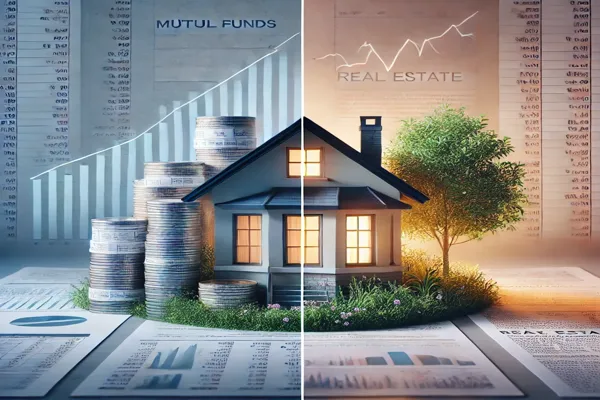Blogs Section

Why I Focus on Economically Resilient Affordable Housing
When it comes to real estate investing, I believe in targeting opportunities that balance strong financial returns with resilience, especially in uncertain markets. That’s why I focus on economically resilient affordable housing. For me, this strategy is all about creating stability, supporting communities, and building lasting value. And just to clarify, when I say "affordable housing," I don’t mean government programs—I’m talking about safe, well-located workforce housing that serves working professionals and families. Here are four key benefits of this approach:
1. Profit Potential
Affordable housing isn’t often seen as high-return, but I’ve found it can outperform expectations. Renovating existing properties is more cost-effective than new construction, which helps keep expenses low and profit margins healthy. With the right management and planning, these investments can generate stable cash flow and long-term appreciation, making them a smart choice for sustainable returns.
2. Community Impact
I’m passionate about making a meaningful difference in the communities where we invest. By revitalizing affordable housing, we’re creating jobs—particularly in construction and property management—and helping people live closer to their workplaces, which cuts down commuting costs and boosts the local economy. This approach doesn’t just benefit investors; it supports communities and provides accessible, safe, and quality housing for those who need it.
3. Recession Resilience
While luxury properties can see significant demand fluctuations during economic downturns, we have seen affordable housing remain in high demand. People need a place to live, regardless of the economy, and affordable options offer stability that other sectors can’t always match. This makes it a strong choice if you’re looking for an investment that has stronger potential to weather market shifts.
4. Reduced Vacancy Rates
Workforce housing properties often demonstrate greater resilience during economic downturns compared to luxury Class A apartments. This is due to their higher occupancy rates—typically 3-5% above those of Class A properties, according to Fannie Mae. As economic challenges arise, more renters seek affordable housing options, driving consistent demand for workforce housing.
In addition, high-end Class A properties tend to experience higher vacancy rates during uncertain times as people opt for more budget-friendly living arrangements. In contrast, affordable housing provides both stability and profitability through lower turnover and steady income streams.
My goal with this focus on safe and affordable workforce housing is to give investors a balanced approach that combines profitability with positive impact. By prioritizing economically resilient properties, I aim to build value that lasts—for our investors, our tenants, and the communities we’re a part of.

Why I Focus on Economically Resilient Affordable Housing
When it comes to real estate investing, I believe in targeting opportunities that balance strong financial returns with resilience, especially in uncertain markets. That’s why I focus on economically resilient affordable housing. For me, this strategy is all about creating stability, supporting communities, and building lasting value. And just to clarify, when I say "affordable housing," I don’t mean government programs—I’m talking about safe, well-located workforce housing that serves working professionals and families. Here are four key benefits of this approach:
1. Profit Potential
Affordable housing isn’t often seen as high-return, but I’ve found it can outperform expectations. Renovating existing properties is more cost-effective than new construction, which helps keep expenses low and profit margins healthy. With the right management and planning, these investments can generate stable cash flow and long-term appreciation, making them a smart choice for sustainable returns.
2. Community Impact
I’m passionate about making a meaningful difference in the communities where we invest. By revitalizing affordable housing, we’re creating jobs—particularly in construction and property management—and helping people live closer to their workplaces, which cuts down commuting costs and boosts the local economy. This approach doesn’t just benefit investors; it supports communities and provides accessible, safe, and quality housing for those who need it.
3. Recession Resilience
While luxury properties can see significant demand fluctuations during economic downturns, we have seen affordable housing remain in high demand. People need a place to live, regardless of the economy, and affordable options offer stability that other sectors can’t always match. This makes it a strong choice if you’re looking for an investment that has stronger potential to weather market shifts.
4. Reduced Vacancy Rates
Workforce housing properties often demonstrate greater resilience during economic downturns compared to luxury Class A apartments. This is due to their higher occupancy rates—typically 3-5% above those of Class A properties, according to Fannie Mae. As economic challenges arise, more renters seek affordable housing options, driving consistent demand for workforce housing.
In addition, high-end Class A properties tend to experience higher vacancy rates during uncertain times as people opt for more budget-friendly living arrangements. In contrast, affordable housing provides both stability and profitability through lower turnover and steady income streams.
My goal with this focus on safe and affordable workforce housing is to give investors a balanced approach that combines profitability with positive impact. By prioritizing economically resilient properties, I aim to build value that lasts—for our investors, our tenants, and the communities we’re a part of.

